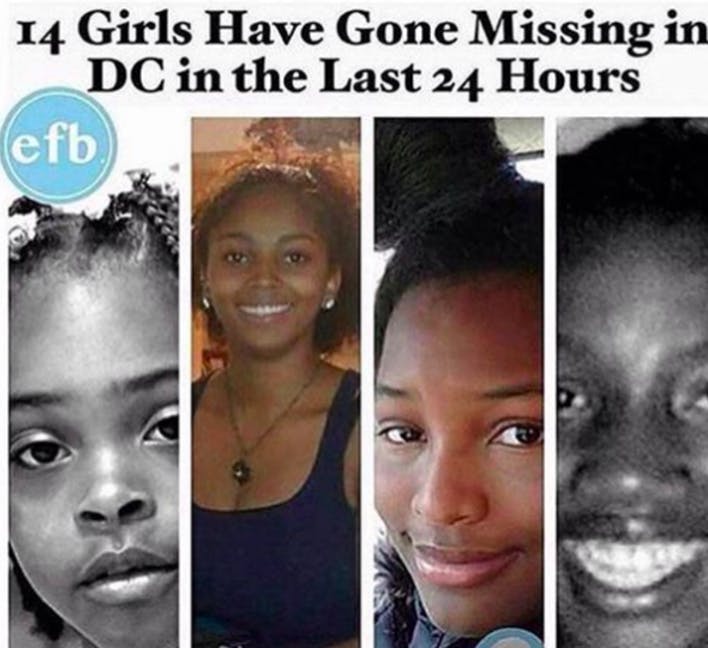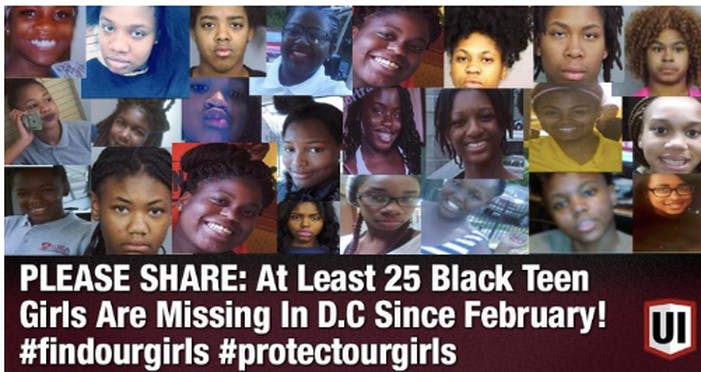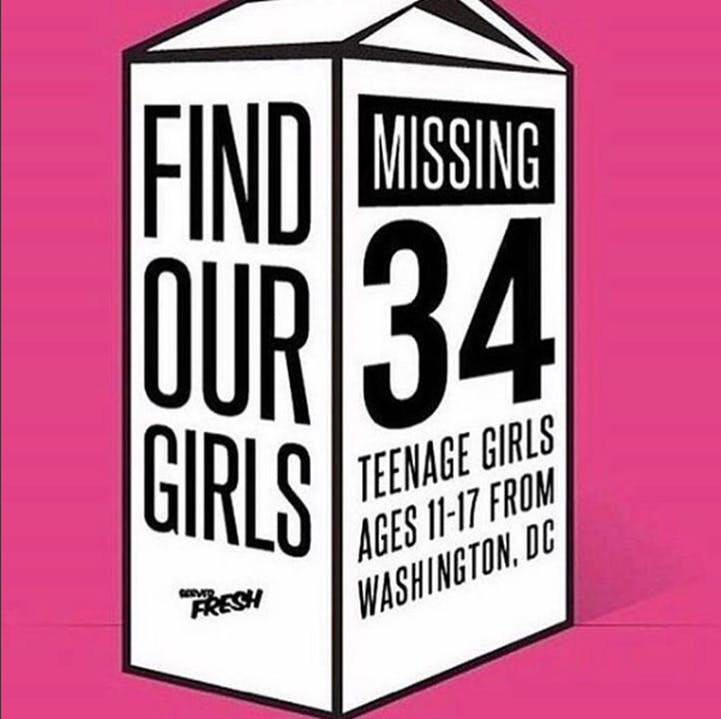BY: YESENIA JONES
Recently, a social media post claiming that 14 girls went missing from Washington, D.C. in a 24 -hour time span has gone viral. The post has sparked a national outcry to help find these girls. Multiple celebrities, including Taraji P. Henson and LL Cool J, have shared the post on their personal Twitter accounts, bringing even more attention to the issue. The problem here? It might not be true.

This image was originally published on EntertainmentForBreakfast.com, but has since been deleted.
Similar social media posts have claimed that there has been an abnormal amount of Latina and African American teenage girls missing from the D.C. metropolitan area. These claims have lead to theories of increased sex trafficking and child abduction.
While there are black and brown girls missing from the District - like Relisha Rudd(pictured first), who was just eight-years-old when she went missing in 2014 from a D.C. homeless shelter, and fourteen-year-old Shaniah Boyd (pictured third) who went missing on March 18 - the number of missing girls has been extremely inflated on social media.
D.C. officials have stated that there has not been an increase of missing people from the area. There is also no evidence to support claims of a human trafficking epidemic, according to Metropolitan Police spokeswoman Karimah Bilal. She also said that all of the teens who have been reported missing in 2017 left their place of residence voluntarily.
Contrary to popular belief, the amount of missing juveniles from the area has actually gone down in recent years, from 2,433 in 2015 to 2,242 in 2016, according to the Metropolitan Police Department. As of March 26, 523 teenagers and 289 adults have been reported missing this year. Of these cases, 790 have been closed, leaving 22 cases unresolved. African American and Latina girls are at the center of six of these unresolved cases. Their names are Jessy Hernandez, 23, Shaniah Boyd, 14, Dashann Wallace, 15, Chantese Zimmerman, 15, Demetria Carthens, 17, and Faith Nelson, 16.
An AMBER Alert has not been issued for these girls because their cases do not fall underneath the circumstances required for an alert to be issued. The Department of Justice recommends that law enforcement have "reasonable" belief that an individual has been abducted, the missing child is 17-years-old or younger, that law enforcement believes the missing child is in "imminent danger" and several other criteria before an AMBER Alert is issued.
DOJ also requires "as much descriptive information as possible about the abducted child," but it is unclear how much information satisfies that condition.
Despite the fact that most of the claims being made on social media are untrue, it is true that a disproportionate number of people of color go missing from the United States every year. According to FBI crime statistics from 2016, 647,435 persons were reported missing in 2016 - 218,818 of which were black. Nearly 38 percent of missing persons under the age of 18 are black, according to the same report.
However, cases of missing black children are extremely underrepresented in the media.
It is important that social media users continue to share information about missing persons cases, especially because cases of missing people of color are almost entirely absent from mainstream media. Social media and #FindOurGirlsproves that there is power in the way social media is used.
But, it is equally as important that the information shared is true, especially so that investigators can get the information needed to close cases. D.C. officials have said that using Twitter and other forms of social media has helped them acquire information needed to solve cases.




